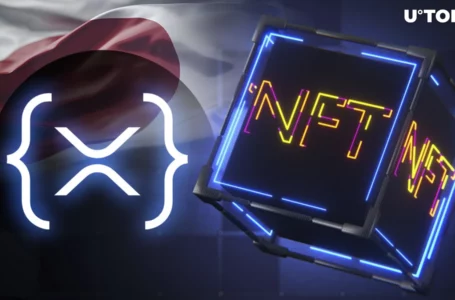
The Symbol (XYM) mainnet entered service in March 2021. The platform combines a high-performance enterprise-grade blockchain, developer’s tools, and a new cryptocurrency. The developers, the primary goal of the project is to create a fairer society that is more inclusive and accessible to all according to developers. Notably, Symbol is a product of the NEM Group. These are the same developers that brought the NEM NIS1 blockchain and XEM cryptocurrency to the market in 2017.
Symbol (XYM) was built to run parallel with the NIS1 blockchain. The system improves on the NIS1 blockchain in a variety of ways. For one, it has full DeFi capabilities including support for NFTs, staking, and more.
What Problems Does Symbol (XYM) Attempt to Fix?
One of the main problems Symbol rectifies is a lack of functionality from earlier blockchains. This fourth-generation network supports the latest DeFi features and is expandable to include future developments in the market. These features plus added smart contract programmability make Symbol far more advanced than its predecessors.
Technical Barriers to Adoption
Symbol (XYM) was built to streamline integration in existing enterprise systems and processes. To accomplish this task, the network provides developer tools including secure APIs. Businesses utilize these assets to deploy public and private chains leveraging trustless data flows across multiple networks. This flexibility enables firms to manage core business operations such as delegating financial authority requirements more efficiently.
Developer Restrictions
Symbol (XYM) provides a feature-rich development ecosystem to encourage collaboration throughout its network. Developers can create more robust and vibrant Dapps using the network. As such, Symbol acts as a catalyst for the creation of new markets. It connects businesses, developers, and users in new ways.
Liquidity Restrains
These new markets help to alleviate liquidity restraints. Many markets in the world lack the liquidity they need to operate smoothly. These liquidity restraints can be due to assets characteristics such as its price. They can also appear due to regulatory requirements such as geopolitical reasons.
For example, selling your house traditionally requires you to find a qualified buyer. They need to possess the finances and the regulatory documentation to complete the sale. Sadly, these requirements cut out much of the global investment community.
Tokenization Brings Opportunity
Symbol (XYM) users can tokenize their assets and reduce these friction points. Tokenization is the process of taking another asset and converting it into a blockchain asset. This process can include breaking an asset down into smaller denominations. There are many advantages to this approach. Primarily, the asset is now open to international investors.
It’s also faster and cheaper in most instances. Take the example of your house sale. A tokenized property can be broken down into smaller segments. These smaller units make the investment more affordable. They can also be sent globally which provides access to more markets.
Benefits of Symbol (XYM)
There are many benefits gained by businesses using Symbol’s services. Tokenization enables these firms to create new revenue streams, lower costs, and improve transparency. Symbol simplifies these processes using an intuitive developer dashboard.
Security
Security is another benefit that Symbol (XYM) brings to the market. The network functions as a secure value exchange. Additionally, the protocol includes advanced features such as on-chain, multi-layer, multi-signature accounts. These options provide businesses with an extra layer of protection. For example, a multi-signature account requires two keys to authorize transactions.
Requiring two signatures allows a business to better manage its crypto funds as the second person can be an accountant or oversight board. Multi-signature accounts help to prevent hacks as well. Phishing attacks are among the most common way hackers gain access to crypto accounts. A phishing attack is a process in which hackers slowly gather information from a variety of sources.
NFT support
Symbol (XYM) supports the issuance, management, and use of NFTs (non-fungible tokens). NFTs are another area of blockchain development experiencing rapid adoption. These tokens can represent anything from a car title to digital art and everything in between. Today there are all types of NFTs in use.
How Does Symbol (XYM) Work
Symbol (XYM) leverages a four-tiered architecture to provide businesses and users with a streamlined experience. Fourth-generation blockchains like Symbol create layers specifically to handle Dapp processing and smart contract execution. This dual-layered approach provides more scalability because it reduces congestion on the primary layer which is used as a digital ledger.
Symbol enables firms to tokenize and create specialized digital assets to meet the needs of their communities. Symbol users can digitize assets such as stocks, signatures, votes, debt, and much more. The process removes the technical barriers from blockchain integration and provides developer tools to speed up the process.
XYM
The XYM token is a critical component of Symbol’s strategy. This token serves multiple roles. For one, it’s used to incentivize nodes. This utility token is also how stakers receive rewards, pay fees, and send transactions on the network. XYM provides fast transaction times and can be sent globally in a permissionless manner.
Summary
Symbol (XYM) provides a valuable service through its decentralized structure. For years, businesses have sought out more cost-effective ways to leverage blockchain technologies advantages. In the past, this required a specialized expert. Platforms such as Symbol continue to simplify these steps and drive blockchain adoption to new heights.



















